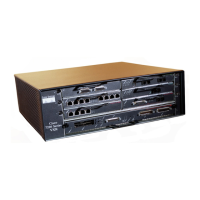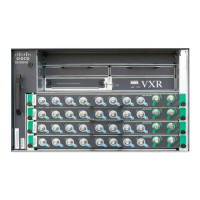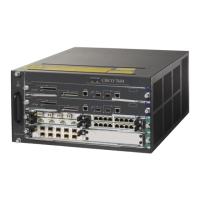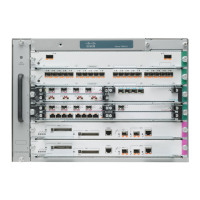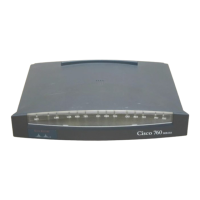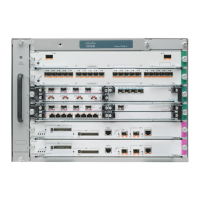Send document comments to nexus7k-docfeedback@cisco.com
1-4
Cisco Nexus 7000 Series NX-OS Interfaces Configuration Guide, Release 5.x
OL-23435-03
Chapter 1 Overview
Information About Interfaces
Port-Channel Interfaces
A port channel is a logical interface that is an aggregation of multiple physical interfaces. You can bundle
up to 8 individual links to physical ports into a port channel to improve bandwidth and redundancy. You
can also use port channeling to load balance traffic across these channeled physical interfaces. For more
information about port-channel interfaces, see Chapter 6, “Configuring Port Channels.”
vPCs
Virtual port channels (vPCs) allow links that are physically connected to two different Cisco Nexus 7000
series devices to appear as a single port channel by a third device. The third device can be a switch,
server, or any other networking device. You can configure a total of 768 vPCs on each device. vPCs
provide Layer 2 multipathing. For more information about vPCs, see Chapter 7, “Configuring vPCs.”
Subinterfaces
You can create virtual subinterfaces on a parent interface configured as a Layer 3 interface. A parent
interface can be a physical port or a port channel. Subinterfaces divide the parent interface into two or
more virtual interfaces on which you can assign unique Layer 3 parameters such as IP addresses and
dynamic routing protocols. For more information on subinterfaces, see the “Subinterfaces” section on
page 4-2.
VLAN Network Interfaces
A VLAN network interface is a virtual routed interface that connects a VLAN on the device to the Layer
3 router engine on the same device. You can route across VLAN network interfaces to provide Layer 3
inter-VLAN routing. For more information on VLAN network interfaces, see the “VLAN Interfaces”
section on page 4-3.
Loopback Interfaces
A virtual loopback interface is a virtual interface with a single endpoint that is always up. Any packet
that is transmitted over a virtual loopback interface is immediately received by that interface. Loopback
interfaces emulate a physical interface. For more information on subinterfaces, see the “Loopback
Interfaces” section on page 4-4.
Tunnel Interfaces
Tunneling allows you to encapsulate arbitrary packets inside a transport protocol. This feature is
implemented as a virtual interface to provide a simple interface for configuration. The tunnel interface
provides the services necessary to implement any standard point-to-point encapsulation scheme. You can
configure a separate tunnel for each link. For more information, see Chapter 8, “Configuring IP
Tunnels.”
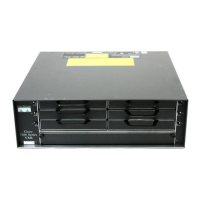
